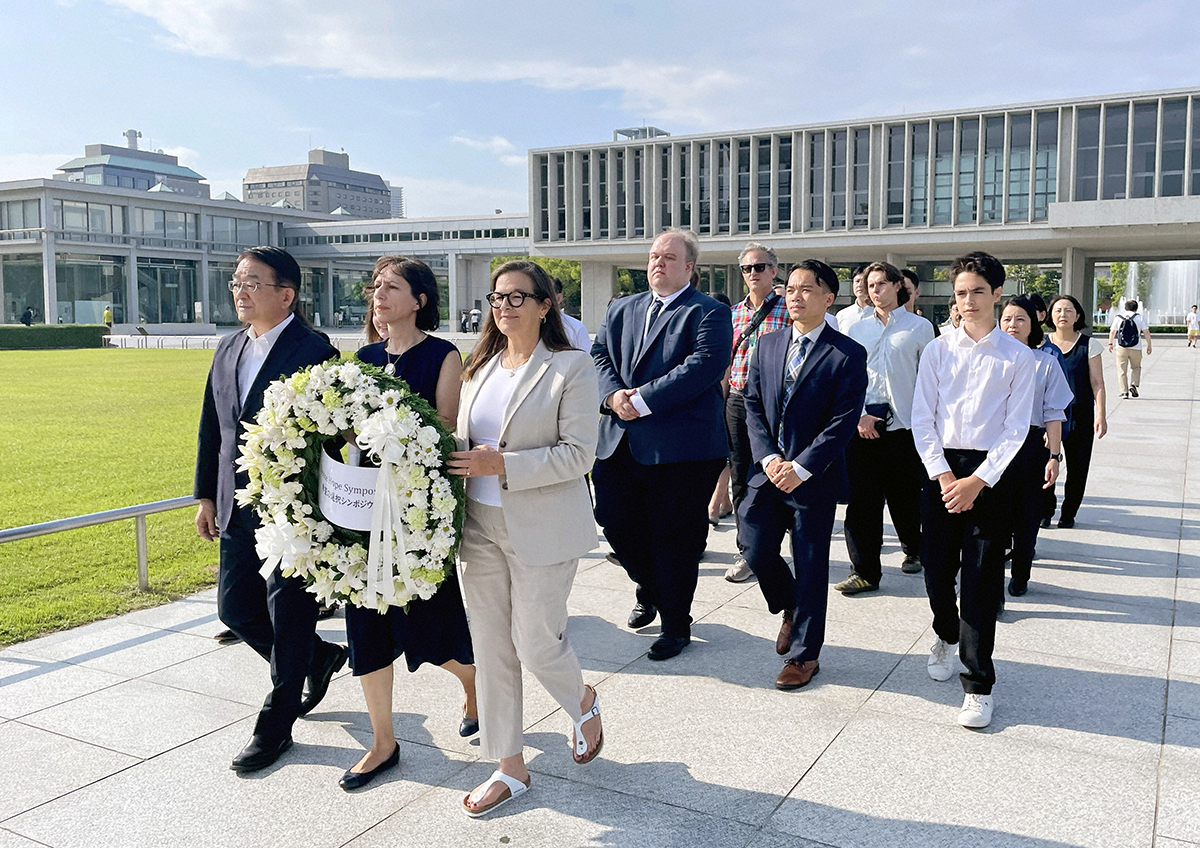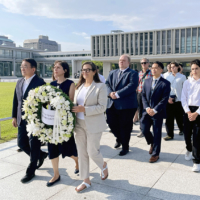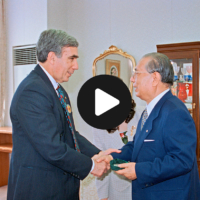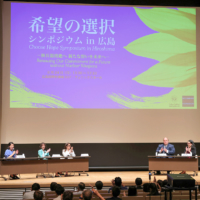On Sept. 26, 1983, one man’s judgment may have saved humanity. A Soviet officer named Stanislav Petrov was monitoring the Oko satellite early warning system when it appeared to show first one — then four more — incoming U.S. nuclear missiles. Instead of reporting this and triggering retaliation, he paused, sensing an unlikely pattern for an attack. The alarms turned out to be false, caused by sunlight reflecting off clouds, and his caution prevented a nuclear exchange that could have destroyed civilization.
Four decades later, the risks posed by nuclear weapons have only grown more acute. Since the dawn of the nuclear age, the world has faced dozens of close calls — with causes ranging from political miscalculation to computer errors, power outages and accidents involving nuclear-armed bombers. In January, the Bulletin of the Atomic Scientists set the “Doomsday Clock” to 89 seconds before midnight, the closest it has ever been, citing heightened nuclear tensions and rising threats of use.
The stark reality is that nuclear weapons and deterrence do not keep us safe. They hold humanity hostage to the possibility of sudden annihilation.
This danger is vividly illustrated in investigative journalist Annie Jacobsen’s recent book “Nuclear War: A Scenario.” Based on interviews with experts, including senior U.S. military officials, it describes what might happen if a single missile is launched from North Korea toward Washington, D.C. This triggers a series of events, mere seconds and minutes apart, that result in a full-scale nuclear war, and in less than 72 minutes, the world as we know it has ended.
Pentagon war games have confirmed that there is no such thing as a limited nuclear war. The aftermath would be global. Jacobsen cites research showing that the resulting nuclear winter — caused by soot blocking sunlight and the collapse of agriculture — could kill up to 5 billion people.
History shows that storytelling and increased awareness can change policy. In the 1980s, U.S. President Ronald Reagan shifted his views on nuclear weapons after watching the television film “The Day After,” which depicted the horrors of nuclear war. That helped lead to the Reykjavik Summit, which saw Reagan and Soviet Union leader Mikhail Gorbachev take the first steps toward agreements that eventually reduced global stockpiles of atomic weapons from some 70,000 warheads in 1986 to just over 12,000 today.
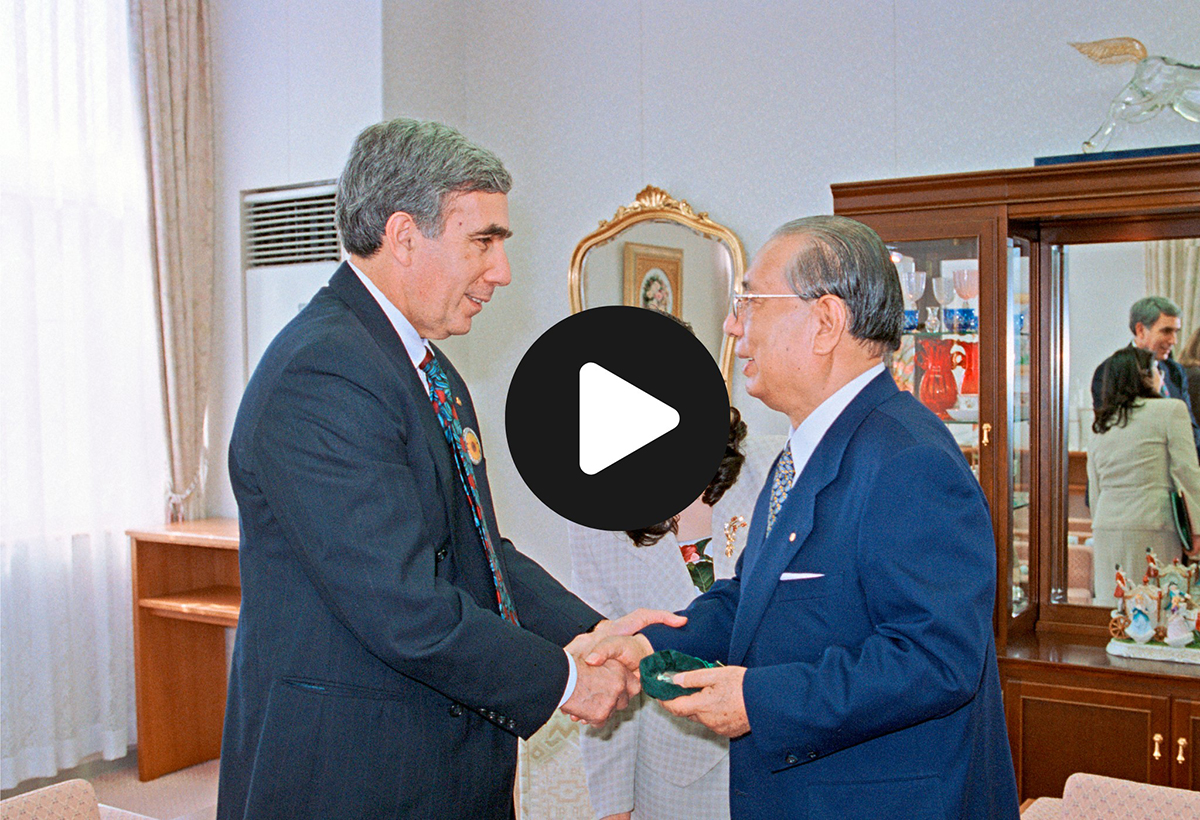
Awareness-raising and dialogue remain essential. This year, two international symposiums — in Santa Barbara and Hiroshima — brought together activists, scholars, victims and youth under the theme of “Choose Hope.” These meetings honored the legacies of peacemakers David Krieger, co-founder of the Nuclear Age Peace Foundation, and Daisaku Ikeda, the late president of Soka Gakkai International.
In their 2002 book “Choose Hope,” they argued that nuclear weapons were already obsolete. Ikeda warned that entrusting human survival to a handful of nuclear-armed nations places all humanity in jeopardy, and Krieger decried the “thick layers of ignorance and apathy” surrounding the nuclear threat. Both insisted that every individual has a role to play in awakening society to the urgency of abolition.
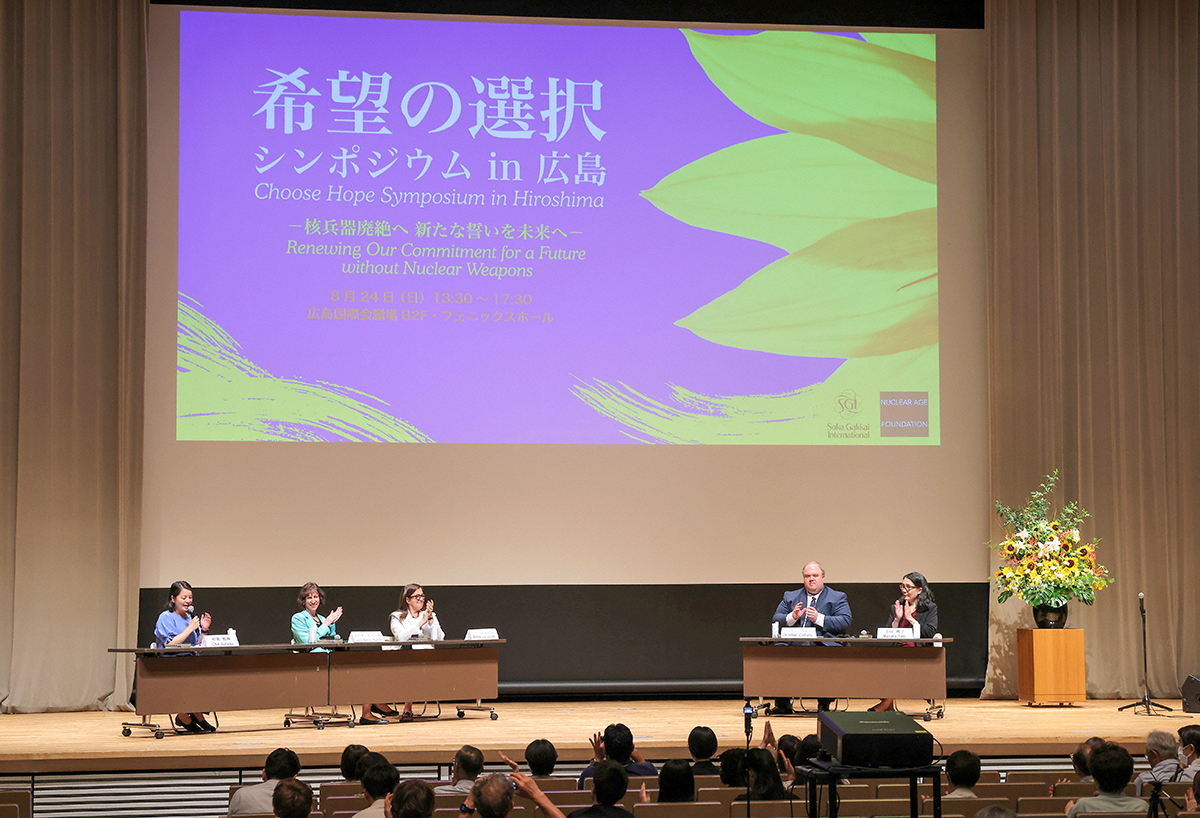
At the Choose Hope Symposium in Hiroshima in August, Jacobsen described the U.S. “launch on warning” protocol, which leaves the president little option but to order a nuclear counterstrike almost immediately after an incoming attack is confirmed. “These are real fears,” she said. “I keep it simple and tell the story. People come to the conclusion that nuclear war is madness.”
Second-generation hibakusha Mariko Higashino said, “Please think about what you can do as individuals from here on to create a peaceful world.”
Youth representatives concluded by stressing that the creativity and moral clarity of youth can help guide us toward a nuclear-free future.
In a statement issued on Aug. 1, to mark 80 years since the end of World War II, Soka Gakkai President Minoru Harada urged a shift from mistrust and military buildup toward collaborative action on shared challenges, including nuclear abolition.
He declared, “I am deeply concerned by the continued erosion of the dignity of individual life amid ongoing conflicts and civil wars, compounded by the threat of nuclear weapons, which is once more intensifying.” He reaffirmed his pledge to contribute to building peace not only in the Asia-Pacific — anchored in reflection on the suffering caused by Japan’s wartime actions — but also across the globe.
Japan has a unique role to play. It remains the only country to have suffered nuclear bombing in war, yet it continues to rely on the U.S. nuclear umbrella for its defense. This contradiction weakens its moral authority. Japan should take the lead in disarmament efforts and give international platforms to the voices of the survivors of Hiroshima and Nagasaki, whose testimonies demand abolition.
The lesson of Petrov’s decision four decades ago is that human beings can choose restraint over destruction. The lesson of Hiroshima and Nagasaki is that the consequences of any use of nuclear weapons would be devastating beyond belief. It is up to each of us to act based on the conviction that real security comes not from the threat of annihilation, but from the courage to abolish nuclear weapons.
Soka Gakkai is a global community-based Buddhist movement founded in Japan. For over 60 years, it has promoted the abolition of nuclear weapons. The SGI, the international association of the Soka Gakkai, has created a learning hub with resources to help build momentum toward nuclear disarmament and abolition.
This article is sponsored by Soka Gakkai.



